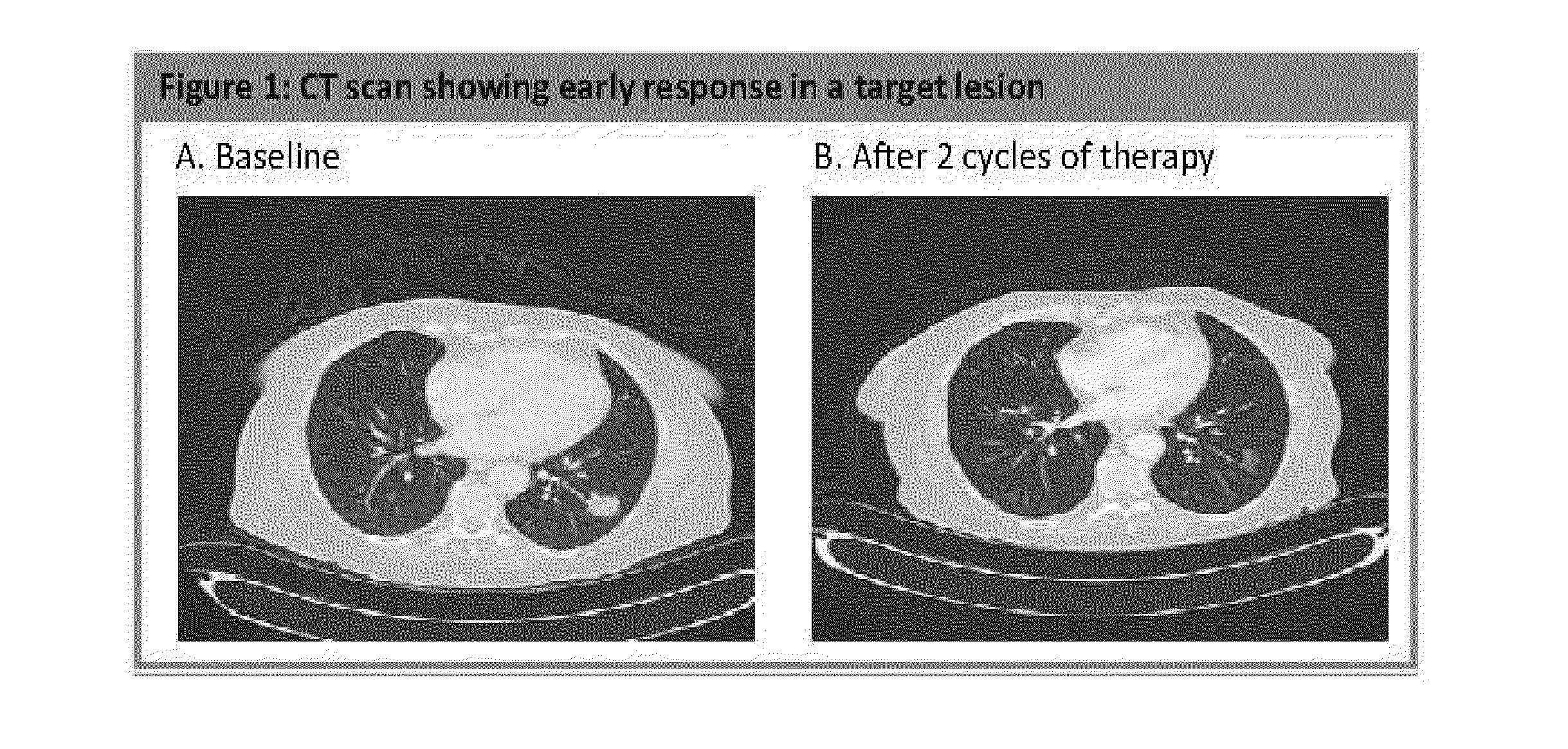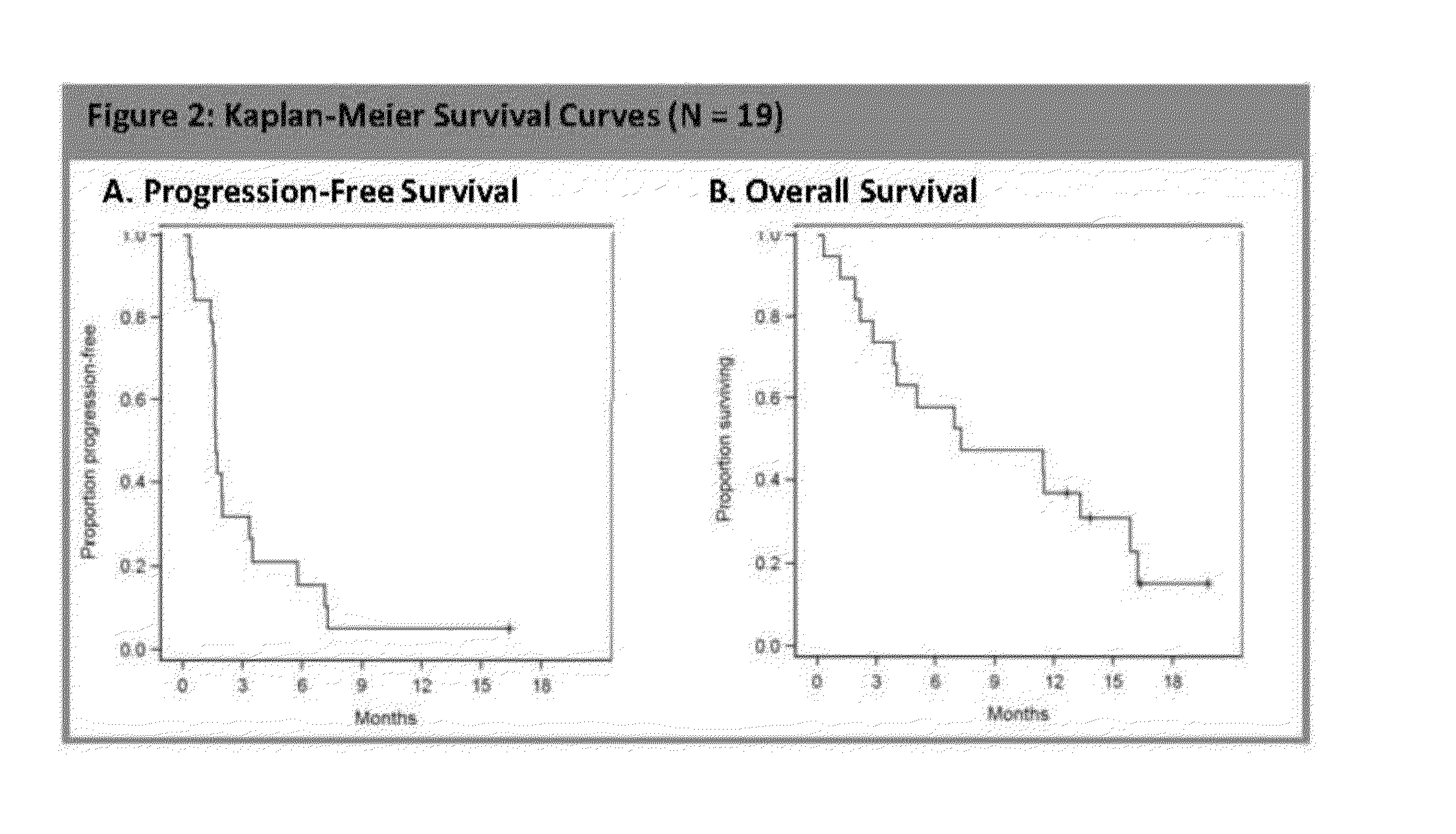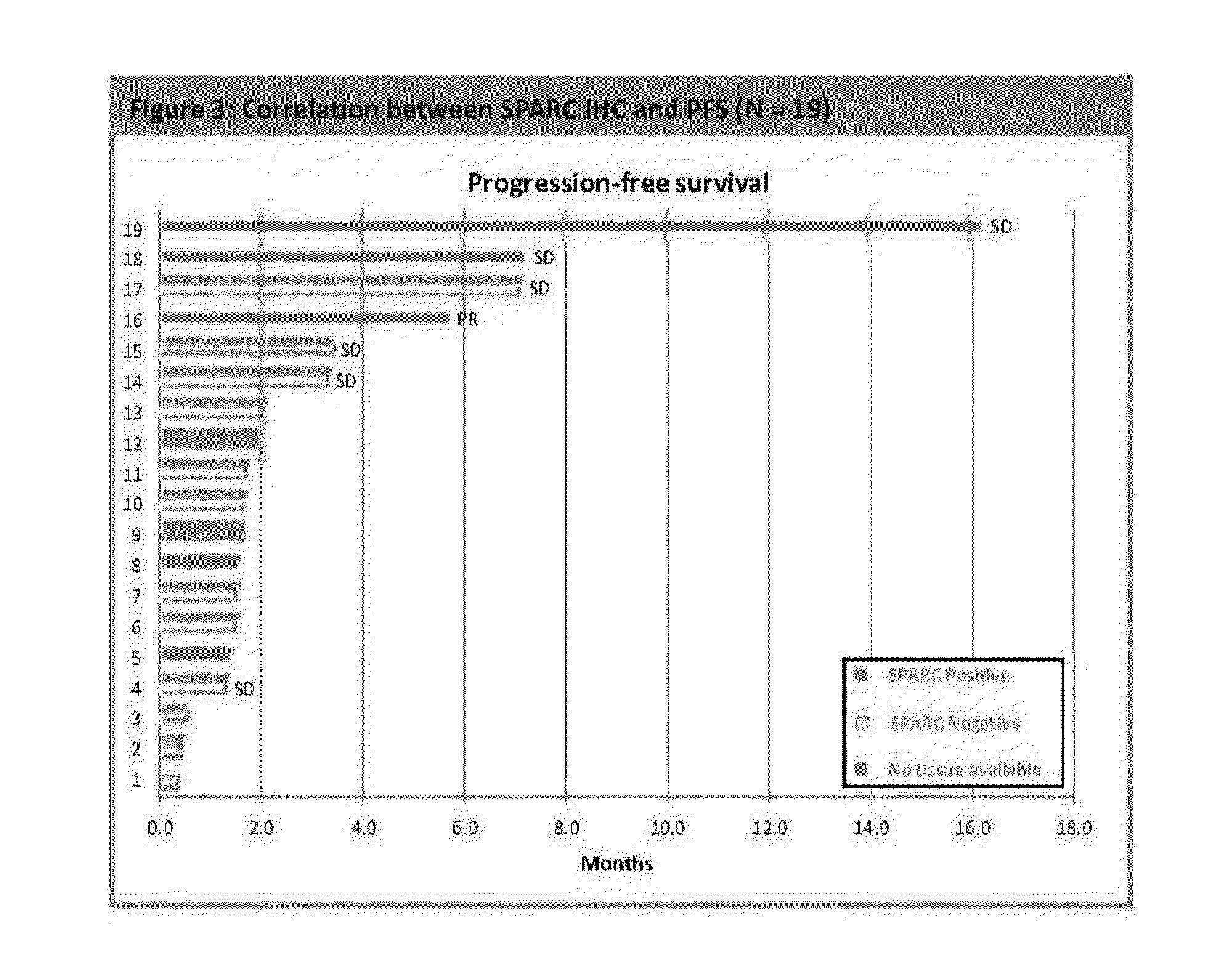Methods of treatment of pancreatic cancer
a pancreatic cancer and composition technology, applied in the field of methods and compositions for the treatment of pancreatic cancer, can solve the problems of low pancreatic cancer treatment improvement, high mortality rate of pancreatic cancer, and failure to identify an improved treatment regime, so as to prolong the overall survival, prolong the disease-free survival, and delay the progression
- Summary
- Abstract
- Description
- Claims
- Application Information
AI Technical Summary
Benefits of technology
Problems solved by technology
Method used
Image
Examples
example 1
A Phase II Trial of Nab-Paclitaxel in Patients with Advanced Pancreatic Cancer Who have Progressed on Gemcitabine-Based Therapy
[0306]This example demonstrates that Nab-paclitaxel was well tolerated and provided clinical benefit in patients who had progressed on gemcitabine-based therapy.
Materials and Methods
[0307]In the Phase II open-label trial, patients with locally advanced, unresectable or metastatic pancreatic ductal carcinoma (ECOG PS 0-2) who progressed within 6 months of gemcitabine-based therapy received nab-paclitaxel at 100 mg / m2 intravenously over 30 minutes on days 1, 8 and 15 on a 28-day cycle. The patients were at least 18 years of age with good organ function. The contrast CT (Computed Tomography) was evaluated at baseline and every 2 cycles. The primary endpoint was 6-month overall survival (OS). The secondary endpoints were response rate by RECIST (Response Evaluation Criteria In Solid Tumors) criteria, progression-free survival (PFS), safety and tolerability, and ...
example 2
A Phase I Study of Two Different Schedules of Nab-Paclitaxel with Ascending Doses of Vandetanib with Expansion in Patients with Pancreatic Cancer
[0310]This Example reports a Phase I study of two different schedules of Nab-paclitaxel with ascending doses of vandetanib with expansion in patients with pancreatic cancer. A primary objective was to determine the maximum tolerated dose (MTD) of the combination of Nab-paclitaxel and vandetanib. A secondary objective was to assess preliminary efficacy in patients with pancreatic cancer.
Materials and Methods
[0311]Patients were randomized to one of two cohorts. Doses of Nab-paclitaxel for Cohort A were fixed at 100 mg / m2 Nab-paclitaxel intravenously weekly for three weeks on a 28 day cycle. Doses of Nab-paclitaxel for Cohort B were fixed at 260 mg / m2 Nab-paclitaxel intravenously on a three week schedule. Vandetanib was administered to patients at doses of 100 mg, 200 mg, or 300 mg by mouth daily for each cohort. A 3+3 design was used. Expansi...
PUM
| Property | Measurement | Unit |
|---|---|---|
| diameter | aaaaa | aaaaa |
| particle size | aaaaa | aaaaa |
| size | aaaaa | aaaaa |
Abstract
Description
Claims
Application Information
 Login to View More
Login to View More - R&D
- Intellectual Property
- Life Sciences
- Materials
- Tech Scout
- Unparalleled Data Quality
- Higher Quality Content
- 60% Fewer Hallucinations
Browse by: Latest US Patents, China's latest patents, Technical Efficacy Thesaurus, Application Domain, Technology Topic, Popular Technical Reports.
© 2025 PatSnap. All rights reserved.Legal|Privacy policy|Modern Slavery Act Transparency Statement|Sitemap|About US| Contact US: help@patsnap.com



